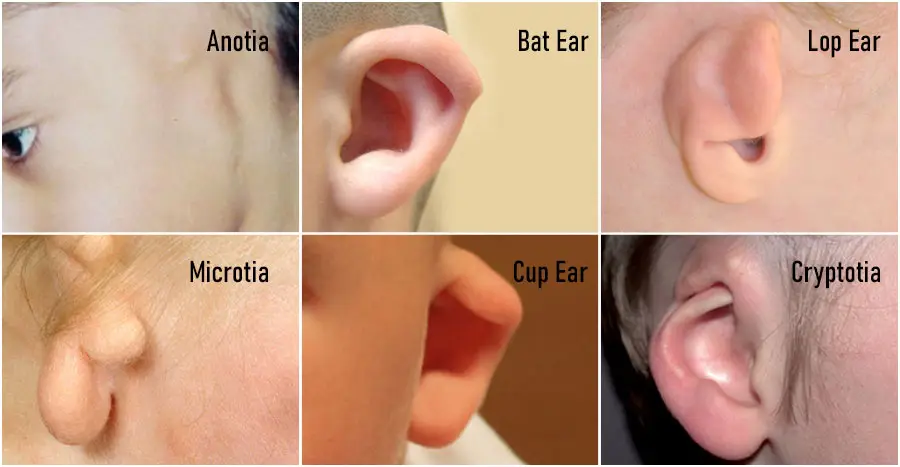Types of Ear Deformities

Congenital ear deformities or ear malformations can be described as a disorder that affects the growth of the baby's ears while the baby is developing in the mother's womb. Although there is no specific reason for congenital ear deformity, lack of blood supply during fetal development, medication intake, or genetic modification can be considered as a few of the reasons responsible for ear deformities. Apart from this, ear deformities can occur as a result of an accident or trauma. Ear deformities result in problems such as hearing loss, ear infection, cosmetic issues that affect the overall appearance of an individual and their self-confidence.
Different types of ear deformities which can affect an individual are as follows:
1. Anotia: Anotia is a congenital defect in which the external ear is completely missing. This happens during the first few weeks of pregnancy which can affect either both or one ear. This deformity is associated with conductive hearing loss. Conductive hearing loss occurs when sound waves are not transferred properly from the external ear canal to the eardrum.
2. Microtia: The underdeveloped outer ear is termed as microtia. This deformity can be identified as a missing feature of the ear or when the external ear is not developed completely. It is a type of birth defect. This condition can be corrected with microtia surgery.
3. Cup Ear: Cup ear refers to the deformity of the ear where the top rim of the ear is folded, tight, or wrinkled. The condition of a cup ear can vary from mild to severe. Where in the mild condition only the rim of the upper ear is folded, in the severe form the helix cartilage and scapha of the ear is squeezed forming a roll.
4. Cryptotia: Cryptotia is also known as the hidden ear. This deformity is classified as the condition where the upper portion of the ear is buried under the skin of the scalp. In this situation, the ear fails to separate and rise from the skin.
5. Bat Ear: Bat ear or prominent ear is an abnormally protruding human ear where the concha is large with poorly developed anti-helix and scapha. This deformity of ears does not cause any functional problems but can result in an affected appearance. Protruding ears can be corrected both with surgical and non-surgical options.
6. Ear Tags: Ear tags are also known as a branchial cleft remnant. These are benign growth of the skin and cartilage which is usually seen in front of the ear. Ear tags can occur as a result of genetic syndrome or by themselves.
Any deformity that is caused due to the abnormal positioning in the uterus during birth is temporary and there are chances that it can resolve on its own. But, on the other hand, the deformities that are inherited congenitally need medical attention to be repaired or reconstructed.
Different types of surgical and non-surgical treatments are carried out to reconstruct the ear deformities. One of the most commonly performed surgery is Otoplasty or Ear Reconstruction. The otoplasty surgery involves the alteration of the ear by using permanent sutures to redefine the normal curves, creating the ear structure identical to other normal looking ear using rib cartilage, correcting the asymmetries between the two ears by restoring the ear position into harmony with the face.
All these ear defects can be corrected with various types of ear corrective or reconstruction surgery. To undergo ear reconstruction surgery one must get in touch with an expert plastic surgeon as the procedure is complex and related to one of the prominent features of the face. For detailed information and guidance on ear reconstructive and otoplasty surgery, visit Designer Bodyz and get a consultation from Dr. Parag Telang, an expert ear reconstructive surgeon.

Author
MBBS, MS - General Surgery, MCh - Plastic & Reconstructive Surgery, DAFPRS Fellowship in Aesthetic Surgery